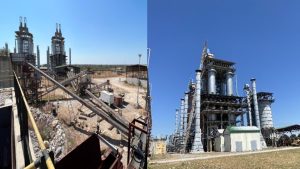Advanced braking systems have become a defining feature of high-performance and luxury vehicles, where precision, durability and weight efficiency are paramount. Carbon-ceramic brakes, born from aerospace materials science, deliver exceptional heat resistance and structural integrity under the most demanding conditions. Originally developed for aircraft applications, these advanced composites have been tailored to meet the automotive sector’s needs, offering reduced unsprung mass and extended service intervals compared with traditional iron discs.
The global market for carbon-ceramic brake components is on a robust upward trajectory. Industry estimates place its value at around US$500 million in 2025, with forecasts suggesting growth to nearly US$900 million by 2032 at a compound annual growth rate approaching 9 per cent. Another analysis points to an even steeper rise of over 11% year-on-year, driven by expanding use in both high-end automotive and aerospace sectors. As electrification and lightweight vehicle architectures become priorities, the appeal of carbon-ceramic solutions continues to grow among original equipment manufacturers.
At the heart of carbon-ceramic brakes lies a continuous carbon-fibre matrix embedded within a ceramic framework. This unique structure delivers an outstanding strength-to-weight ratio and superior thermal conductivity, ensuring minimal brake fade even under prolonged high-speed use. Drivers benefit from enhanced safety and confidence, while lower wear rates and resistance to high-temperature cycles help cut particulate emissions and maintenance costs.
Once the preserve of supercars and racing machines, carbon-ceramic brakes are now gaining favour in electric vehicles and performance SUVs. Here, regenerative braking systems can be paired with high-performance friction brakes, the lightweight discs supporting greater range without compromising the stopping power expected of a sports car. This crossover from motorsport to mainstream production underscores the technology’s maturity and reliability, encouraging broader adoption by global OEMs.
The supply chain for carbon-ceramic discs has evolved to meet surging demand, with manufacturers investing in new facilities in key automotive regions and forging partnerships to boost capacity. Collaborative research between materials specialists and vehicle makers continues to refine every stage of production, from raw-material formulation to final machining, raising quality and performance standards with each iteration.
In the United Kingdom, Surface Transforms stands at the forefront as the country’s only automotive manufacturer of carbon-ceramic brake discs. Leveraging its proprietary CCST material and full in-house engineering capabilities, the company serves both automotive and aerospace clients. Since its spin-out from academic research in 1992, it has maintained rigorous process control and secured industry accreditations, reflecting a steadfast commitment to innovation.
Looking ahead, tighter environmental regulations, the shift to electrified powertrains and consumer demand for premium driving experiences will sustain growth in the carbon-ceramic brake market. Advances in composite materials and additive manufacturing promise even lighter, more efficient systems. As automakers seek to differentiate their high-performance and luxury models, specialist producers such as Surface Transforms are set to play a pivotal role in shaping the future of vehicle safety and efficiency.
Surface Transforms plc (LON:SCE) are experts in the development and production of carbon-ceramic materials and the UK’s only manufacturer of carbon-ceramic brakes for automotive use.











































